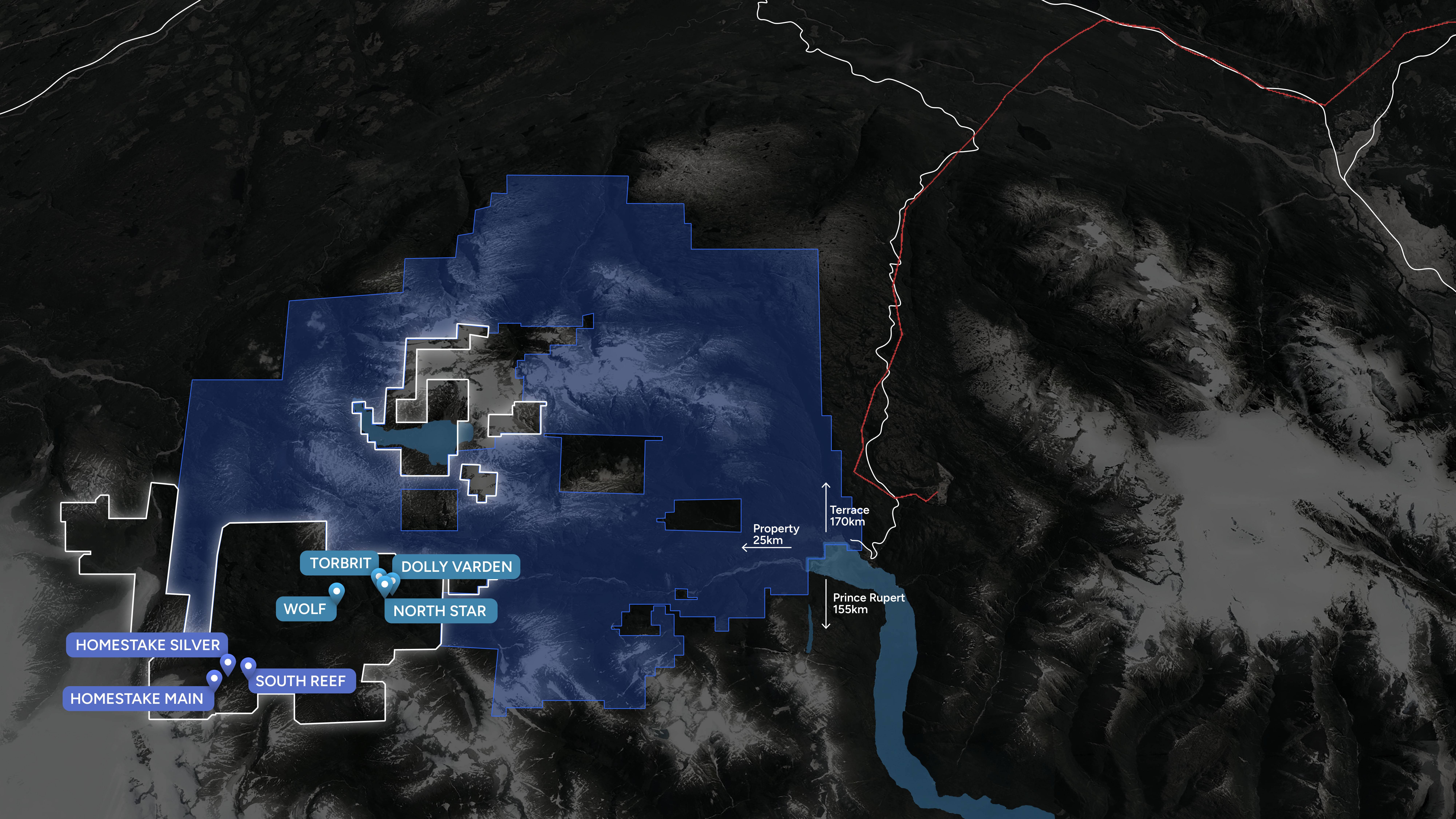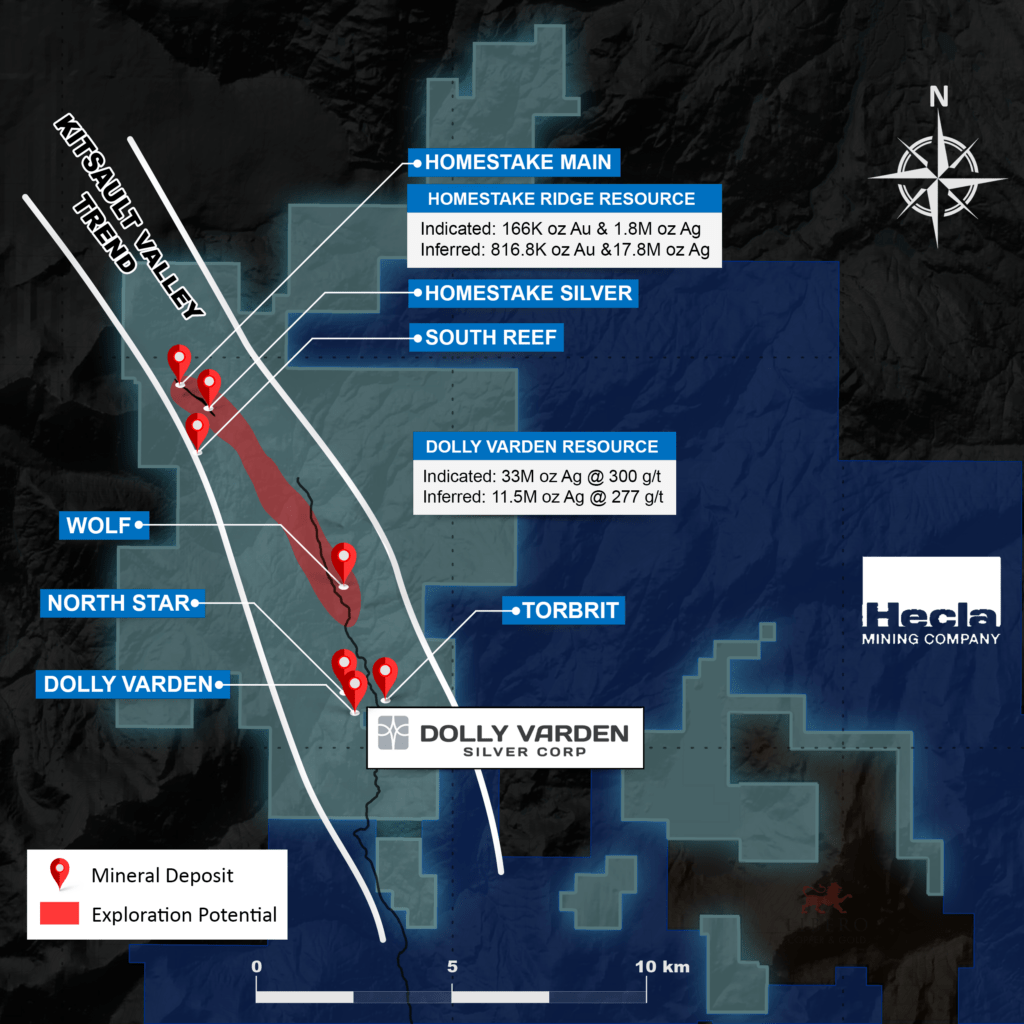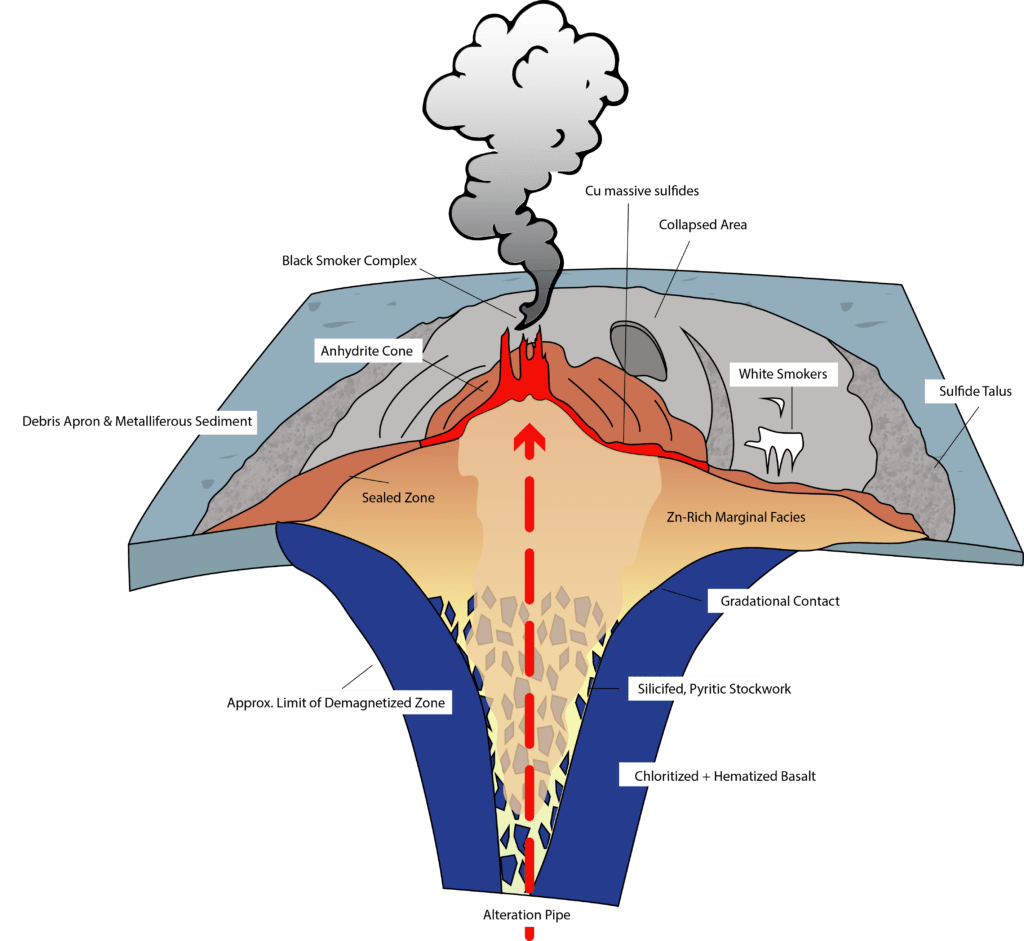- Mineral resources are not mineral reserves, as they do not have demonstrated economic viability although, as per Canadian Institute of Mining, Metallurgy and Petroleum (“CIM”) requirements, the mineral resources reported above have been determined to have demonstrated reasonable prospects for eventual economic extraction.
- The mineral resources were estimated in accordance with the CIM Standards on Mineral Resources and Reserves, Definitions (2014) and Best Practices Guidelines (2019) prepared by the CIM Standing Committee on Reserve Definitions and adopted by the CIM Council.
- The resources reported above are derived from the Technical Report on The Combined Kitsault Valley Project, British Columbia, Canada dated effective September 28, 2022 and authored by Andrew J. Turner, B.Sc., P.Geol., of APEX Geoscience Ltd.. The effective date of the report is September 28, 2022. (“Kitsault Valley Project Technical Report”)
- The cut-off grade for the Homestake claim block mineral resources is 2.0 g/t AuEq, which was determined using average block grade values within the estimation domains and a Au price of $1,300 per troy ounce (“per tr oz”), a Ag price of US$20.00/tr oz and a Cu price of US$2.50/pound, and mill recoveries of 92% for Au, 88% from Ag and 87.5% for Cu and combined mining, milling, and general and administrative costs of approximately US$109/ton.
- The cut-off grade for the Dolly Varden claim block mineral resource is 150 g/t Ag, which was determined using a Ag price of US$20.00/tr oz, a recovery of 90% and combined mining, milling, and general and administrative costs of US$80/ton and was supported by comparison to similar projects.
- Sufficient sample density data existed to allow for estimation of block density within the estimation domains of the Homestake Main, Homestake Silver and Homestake Reef zones, which ranged from 2.69 metric ton per cubic metre (“t/m3”) to 3.03 t/m3.
- Bulk density values ranging from 2.79 t/m3 to 3.10 t/m3 were assigned to individual estimation domains based on available SG measurements for the DV, TB, NS and WF deposits.
- Differences may occur in totals due to rounding.






